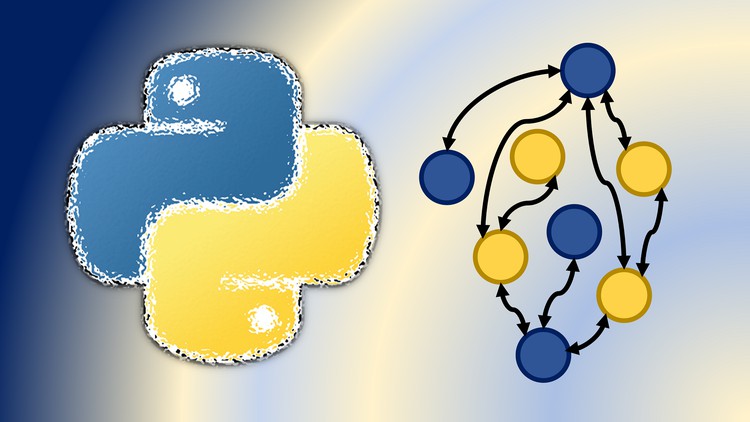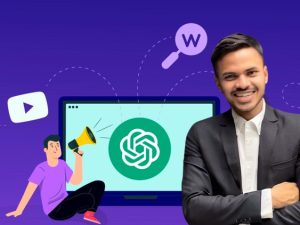Python in 3 Hours! [+ Machine Learning & Deep Learning]
- Description
- Curriculum
- FAQ
- Reviews
1.1. Course instructor
———————————————————-
My name is Mohammad H. Rafiei, Ph.D. I am a researcher and instructor at Johns Hopkins University, College of Engineering, and Georgia State University, Department of Computer Science. I am also the founder of MHR Group LLC in Georgia, a data-analytic company, where we work with various domestic and global researchers at different institutions to address persistent challenges in Computer Science, Engineering, and Medicine, using state of the art machine learning and optimization techniques.
It is my great pleasure to serve as a Udemy instructor, helping thousands of students and researchers across the globe to learn Python and machine learning.
1.2. Does this course suit you?
———————————————————-
You want to (1) learn Python, (2) learn and apply machine learning artificial intelligence in Python, (3) run Python on free CPU, GPU, and TPU cloud computers, (4) do not want to install any bulky software on your computer, (5) want to do all this in less than 3 hours, (6) and want this course to be 100% moneyback guaranteed. If that is the case, then you are in the right place!
In less than 3 hours, this course will teach you:
- Python 3+ from scratch (no installation is required; all on free cloud computers at Google)
- General machine learning concepts and neural networks
- How to develop machine learning models using TensorFlow in Python 3+
- How to investigate your problems in Python
This course helps you if:
- You are a Python beginner who is interested in learning Python and using Python to develop machine learning models in less than 3 hours.
- You are interested in using free and powerful cloud CPU and GPU computers to develop and run your Python codes.
- Almost wherever you are in the world, Google will give you free remote access to its computers.
- Free CPU, GPU, and TPU processors to develop and run your Python codes for Free!
- You only need to have Gmail (free) and Google Chrome (also free) installed on your operating system!
- It does not matter what your operating system is.
- No bulky software is required, just Google Chrome web browser!
- Almost all the cheapest computers in the market can handle Google Chrome, so no significant computer system is required.
- You have no or little knowledge of Python, are interested in learning Python and want to practice machine learning problems in Python, all in a matter of fewer than 3 hours.
- You might have no or little knowledge of Python; you will be taught!
- You might have no or little knowledge of machine learning or neural networks; you will be taught, and you will practice them in Python!
- You are so busy and don’t have the time to go over a 25-hour course that teaches you many rudimentary programming basics.
- You need optimum materials in a minimum amount of time to help you drive Python by yourself!
- You prefer not even install any additional complicated software, editors, or programs on your computer to run Python!
- You might have an old rusty computer, but it is able to run the latest version of Google Chrome (i.e., the Google free web browser).
- Your computer has limited memory to run programming scripts or has a limited hard drive to install bulky and complicated software.
- You will benefit the most if you are familiar with at least one computation-based programming language, such as MATLAB, R, C, C++, C#, etc., and want to switch to or learn Python.
- We are not going to explain, say, what a “for-loop” is, but we will see how to create, say, “for-loops” in Python.
- We are not explaining what an array or matrix is.
1.4. Course Overview
———————————————————-
180 Minutes in 12 Lectures:
- Lecture 01: An Introduction to the Course ( < 18 minutes)
- Lecture 02: Gmail, Chrome, and Google Colab (~11 minutes)
- Lecture 03: Operations, Built-in Functions, and Data Types (~20 minutes)
- Lecture 04: Loops, Conditional Scripts, and Functions (~16 minutes)
- Lecture 05: Numpy and Pandas for Data Processing (~28 minutes)
- Lecture 06: Matplotlib and Seaborn for Data Visualizations (~10 minutes)
- Lecture 07: Data Repositories and Data Split in Machine Learning (~15 minutes)
- Lecture 08: Data Processing and Calibrations in Machine Learning (~13 minutes)
- Lecture 09: Brief Introduction to Neural Networks (~11 minutes)
- Lecture 10: TensorFlow Keras for Regression Neural Networks (~16 minutes)
- Lecture 11: TensorFlow Keras for Classification Neural Networks ( ~13 minutes)
- Lecture 12: Hit the Road on Your Own! ( ~9 minutes)
1.5. Your Contribution
———————————————————-
Please write a review about this course; then, we can modify it and make it better. If you find this course interesting, please refer it to your friends and colleagues.
1.6. Acknowledgment
———————————————————-
I want to thank my wife, Fatemeh, for all her support in developing this course. I want to thank my friend and brother, Ahmad Mohammadshirazi, a computer science Ph.D. student at Ohio State University, for helping me in the video editing of this course.
-
3Operations, Built-in Functions, and Data Types, Part 01Video lesson
By the end of this lecture, you will be able to:
Describe some Python built-in functions
Create Python lists, tuples, and dictionaries
Call elements of Python lists, tuples, and dictionaries
Create strings and print information
Perform basic mathematics in Python
-
4Operations, Built-in Functions, and Data Types, Part 02Video lesson
By the end of this lecture, you will be able to:
Describe some Python built-in functions
Create Python lists, tuples, and dictionaries
Call elements of Python lists, tuples, and dictionaries
Create strings and print information
Perform basic mathematics in Python
-
5Loops, Conditional Scripts, and Functions, Part 01Video lesson
By the end of this lecture, you will be able to:
Define "for" loops in Python
Create conditional statements using "if," "elif," and "else"
Create functions in Python
-
6Loops, Conditional Scripts, and Functions, Part 02Video lesson
By the end of this lecture, you will be able to:
Define "for" loops in Python
Create conditional statements using "if," "elif," and "else"
Create functions in Python
-
7Numpy and Pandas for Data Processing, Part 01Video lesson
By the end of this lecture, you will be able to:
Import Numpy and Pandas in Python
Implement Numpy and Pandas to some extent
Load and save data in Python using Numpy
-
8Numpy and Pandas for Data Processing, Part 02Video lesson
By the end of this lecture, you will be able to:
Import Numpy and Pandas in Python
Implement Numpy and Pandas to some extent
Load and save data in Python using Numpy
-
9Numpy and Pandas for Data Processing, Part 03Video lesson
By the end of this lecture, you will be able to:
Import Numpy and Pandas in Python
Implement Numpy and Pandas to some extent
Load and save data in Python using Numpy
-
11Lecture 11Video lesson
By the end of this lecture, you will be able to:
Comprehend some machine learning data-repository jargons
Describe the training and testing steps in machine learning
Describe repeated random sampling in machine learning
-
12Lecture 12Video lesson
By the end of this lecture, you will be able to:
Comprehend some machine learning data-repository jargons
Describe the training and testing steps in machine learning
Describe repeated random sampling in machine learning
-
15TensorFlow Keras for Regression Neural Networks, Part 01Video lesson
By the end of this lecture, you will be able to:
Develop a shallow neural network using TensorFlow Keras in Python for a regression problem
Develop a deep neural network using TensorFlow Keras in Python for a regression problem
-
16TensorFlow Keras for Regression Neural Networks, Part 02Video lesson
By the end of this lecture, you will be able to:
Develop a shallow neural network using TensorFlow Keras in Python for a regression problem
Develop a deep neural network using TensorFlow Keras in Python for a regression problem

External Links May Contain Affiliate Links read more





